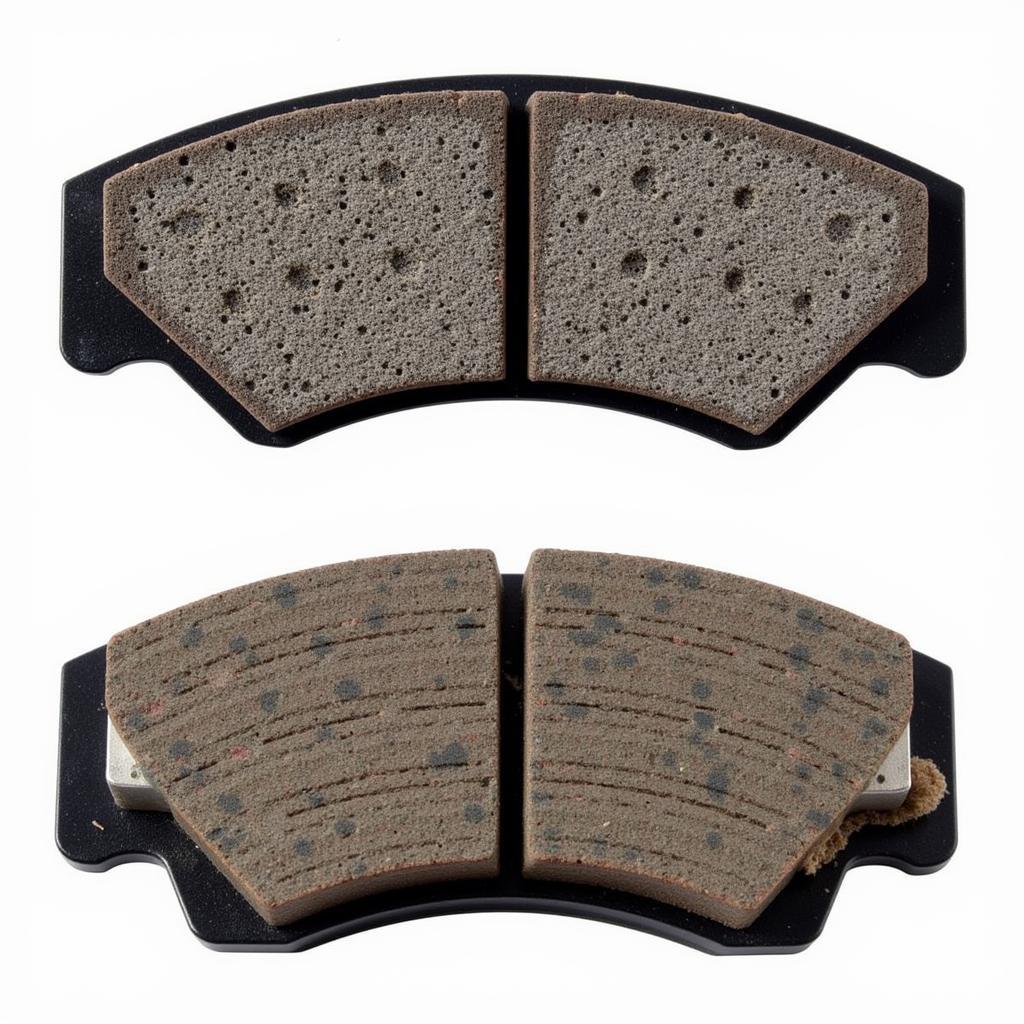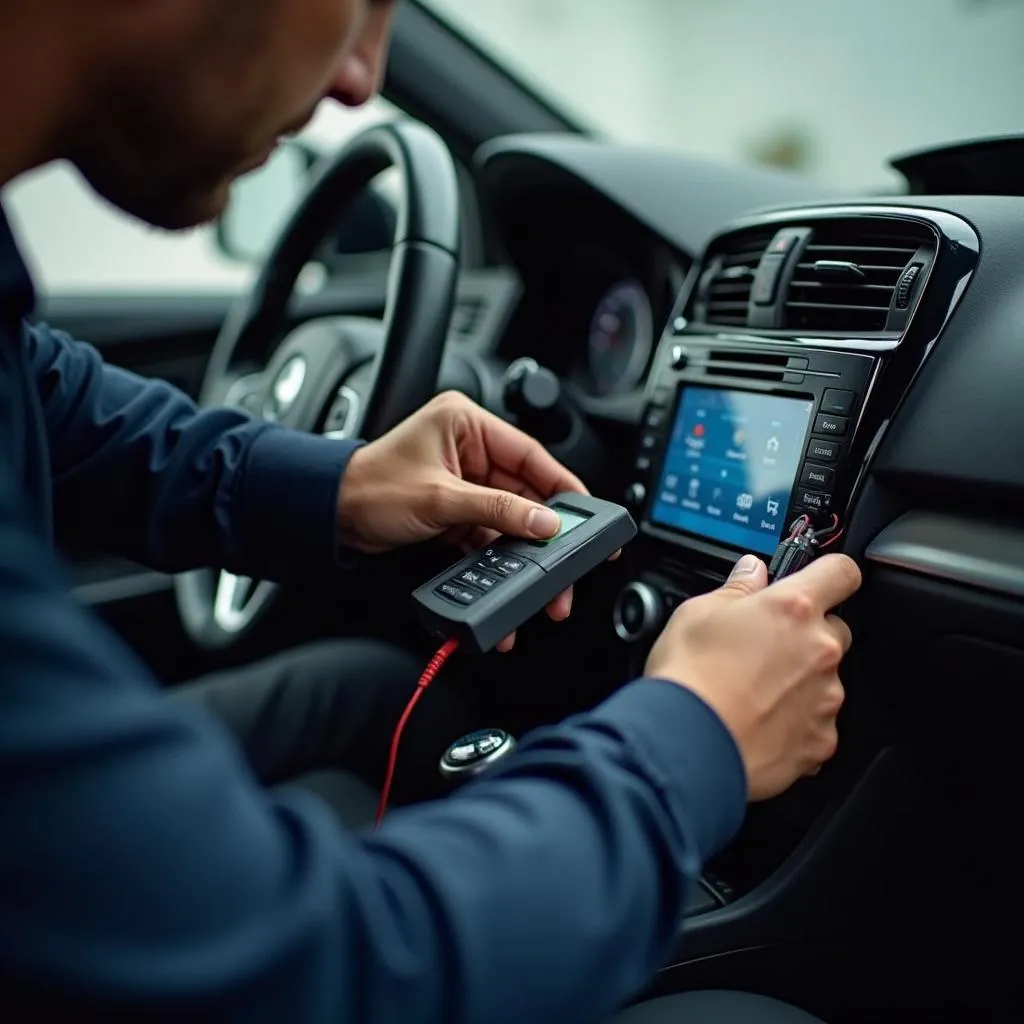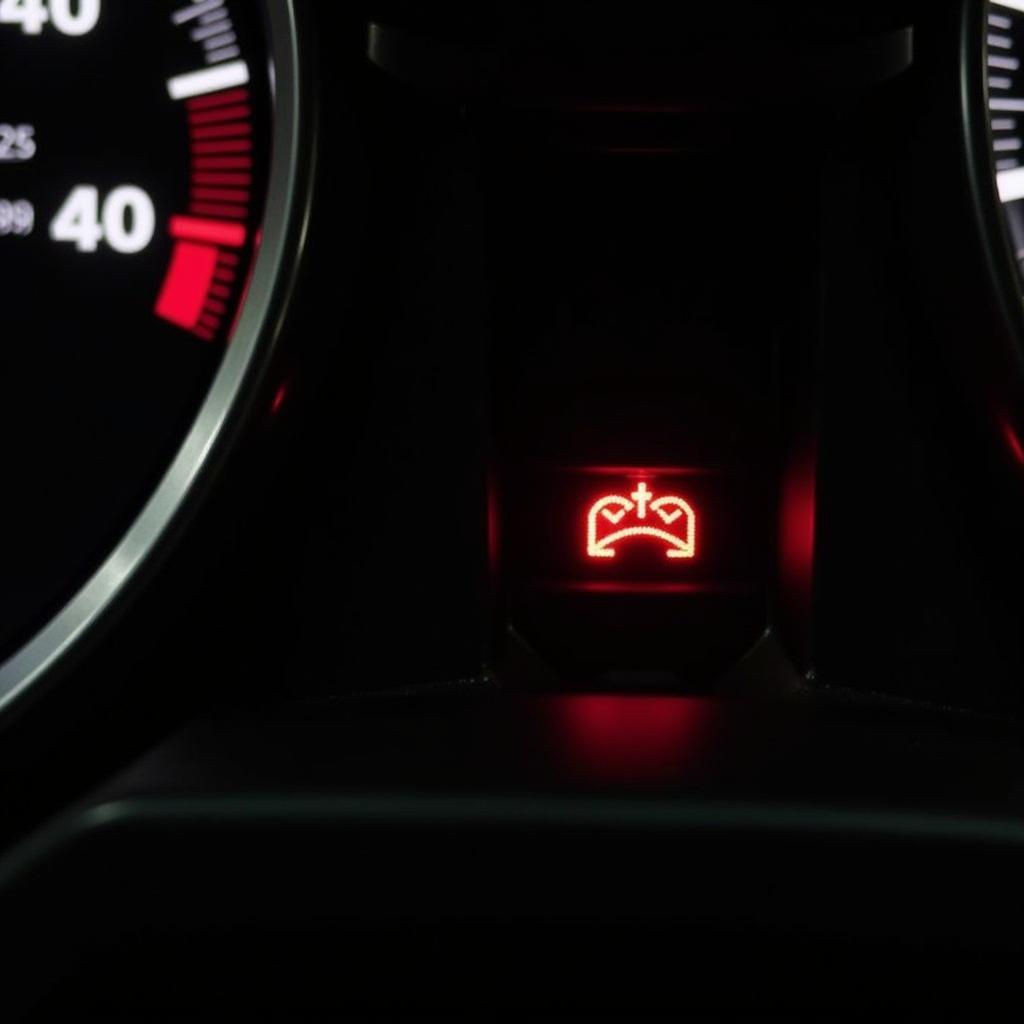Experiencing a sudden illumination of your brake warning light, especially during hard braking, can be a nerve-wracking experience. While it might seem alarming, this issue doesn’t always signal a catastrophic failure. Understanding the common causes and possible solutions can help you address the problem promptly and safely.
Common Reasons Your Brake Warning Light Illuminates When Braking Hard
There are several reasons why your brake warning light might turn on when you apply the brakes forcefully. Here’s a breakdown of the most common culprits:
1. Low Brake Fluid Level
One of the most frequent reasons for the brake warning light to activate is a low brake fluid level. Brake fluid is the lifeblood of your braking system, responsible for transmitting the force from your foot on the pedal to the brake calipers, which then squeeze the brake pads against the rotors to stop your vehicle. A low fluid level often indicates a leak in the system, potentially compromising braking performance and safety.
2. Worn Brake Pads
 Worn brake pads compared to new brake pads
Worn brake pads compared to new brake pads
Brake pads are designed to wear down over time as they generate friction to slow down or stop your vehicle. When the brake pad material wears thin, a sensor (in most modern vehicles) will come into contact with the brake rotor, triggering the brake warning light on your dashboard. This serves as a crucial reminder that your brake pads require immediate replacement.
3. Failing Brake Caliper
A brake caliper houses the brake pads and uses hydraulic pressure from the brake fluid to push the pads against the rotor, generating the friction needed to stop the vehicle. A failing caliper can lead to uneven brake pad wear, pulling, or reduced braking force. This uneven pressure can trigger the brake warning light.
4. Faulty Brake Hose
Brake hoses are responsible for carrying brake fluid from the master cylinder to the calipers. Over time, these hoses can deteriorate, crack, or leak. A leak in the brake hose can lead to a drop in brake fluid pressure, causing the brake warning light to come on, especially when braking hard.
5. ABS System Malfunction
Modern vehicles are equipped with Anti-lock Braking Systems (ABS) designed to prevent wheel lockup during hard braking, enhancing control and stability. A malfunctioning ABS system, often due to a faulty sensor or control module, can trigger the brake warning light.
What to Do When the Brake Warning Light Comes On
If your brake warning light illuminates, especially during hard braking, it’s crucial to take immediate action:
-
Safely pull over: Find a safe location to pull over as soon as possible. Driving with a potential brake issue puts you and other road users at risk.
-
Check your brake fluid level: With the engine off and the vehicle parked on a level surface, carefully open the brake fluid reservoir. Consult your owner’s manual for the location and instructions. If the fluid level is low, do not continue driving. A low fluid level often indicates a leak, which requires immediate professional attention.
-
Contact a qualified mechanic: Even if the brake fluid level appears normal, it’s crucial to have a qualified mechanic inspect your braking system to diagnose the root cause of the warning light.
Remote Diagnostics and Software Solutions in Modern Vehicles
Advancements in automotive technology have led to the integration of sophisticated software systems that control various aspects of your vehicle, including the braking system. This has paved the way for remote diagnostics and software solutions that can help identify and address brake-related issues more efficiently.
-
Remote Diagnostics: Utilizing specialized software and equipment, qualified technicians can remotely access your vehicle’s onboard computer system to retrieve diagnostic trouble codes (DTCs) related to the brake warning light. This allows for a more targeted and efficient approach to identifying the underlying issue.
-
Software Updates and Programming: In some cases, the brake warning light might be triggered due to a software glitch or the need for a software update. Remote programming allows technicians to upload the latest software versions to your vehicle’s control modules, potentially resolving the issue without the need for physical intervention.
“Remote diagnostics played a crucial role in identifying a faulty ABS sensor in a client’s vehicle. We were able to pinpoint the issue remotely and guide the client to a nearby repair facility for a swift resolution.” – John Smith, Senior Automotive Diagnostic Technician
Preventing Brake Warning Light Issues
While not all brake problems are preventable, regular maintenance can significantly reduce the chances of encountering a brake warning light:
-
Adhere to the manufacturer’s recommended brake fluid flush intervals: Regularly flushing your brake fluid helps maintain optimal braking performance and prevents corrosion within the system.
-
Inspect your brake pads and rotors regularly: Visual inspection of your brake pads and rotors during routine maintenance can help identify potential issues early on.
-
Address any brake noises promptly: Unusual noises like squeaking, grinding, or squealing when applying the brakes should be addressed by a qualified mechanic immediately.
FAQs about Brake Warning Lights
1. Can I drive with the brake warning light on?
It’s highly discouraged. The brake warning light indicates a potential issue with your braking system, compromising your safety and others on the road. It’s best to pull over safely and contact a qualified mechanic.
2. How long can you drive with low brake fluid?
Driving with low brake fluid is extremely dangerous and should never be attempted. Even a small leak can lead to a complete brake failure.
3. Can a bad battery cause the brake light to come on?
While rare, a weak or failing battery can sometimes cause erratic behavior in various electrical components, potentially affecting the brake warning light. However, it’s essential to rule out other potential causes before attributing it to the battery.
4. Is it safe to add brake fluid if the light is on?
If the brake fluid level is low, adding brake fluid might temporarily address the warning light. However, it’s crucial to remember that a low fluid level usually indicates a leak that requires immediate professional attention. Simply adding fluid without addressing the root cause is unsafe.
5. How much does it cost to fix a brake warning light issue?
The cost of repair can vary widely depending on the underlying cause. A simple brake pad replacement is significantly less expensive than repairing or replacing a faulty ABS module.
Conclusion
A brake warning light illuminating, especially during hard braking, should never be ignored. Understanding the common causes and taking prompt action can help ensure your safety and prevent further damage to your vehicle’s braking system. Remember, regular maintenance and timely repairs are essential for maintaining optimal braking performance and keeping you safe on the road.


